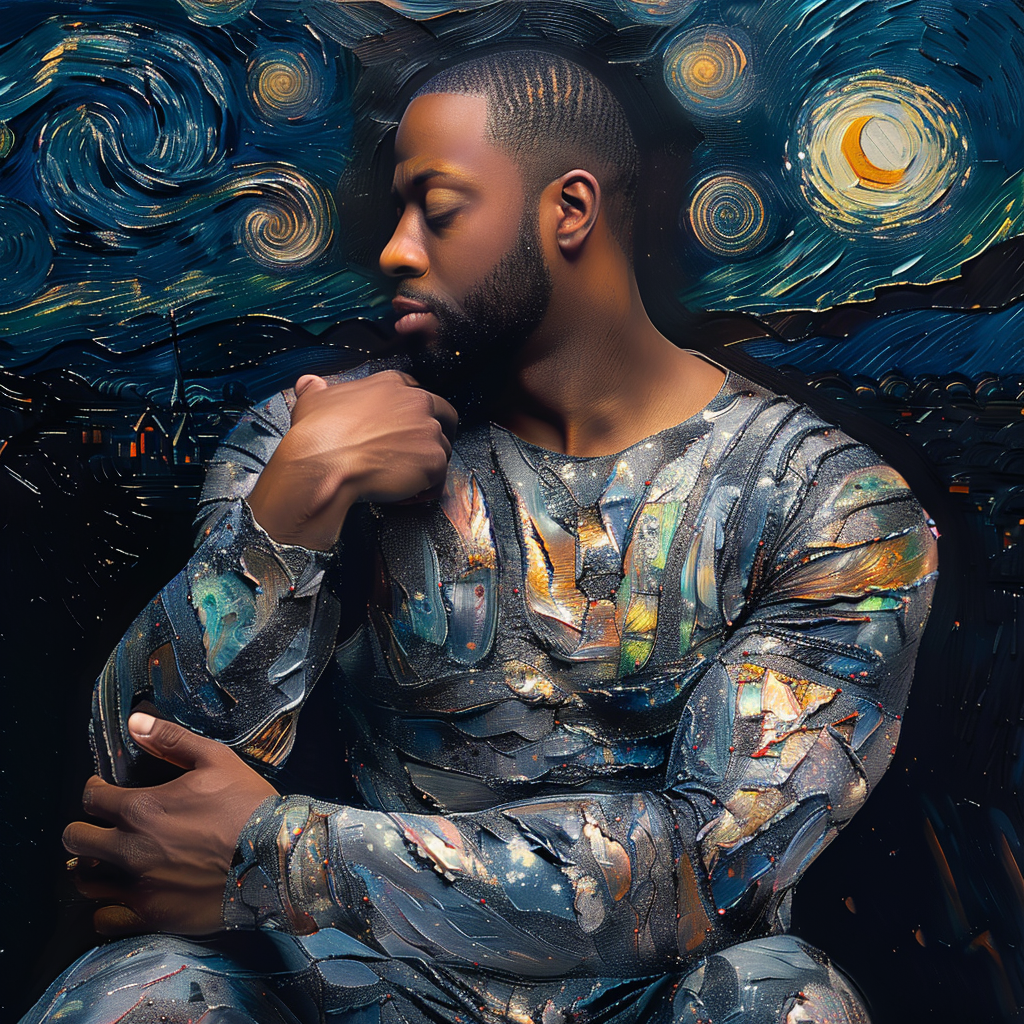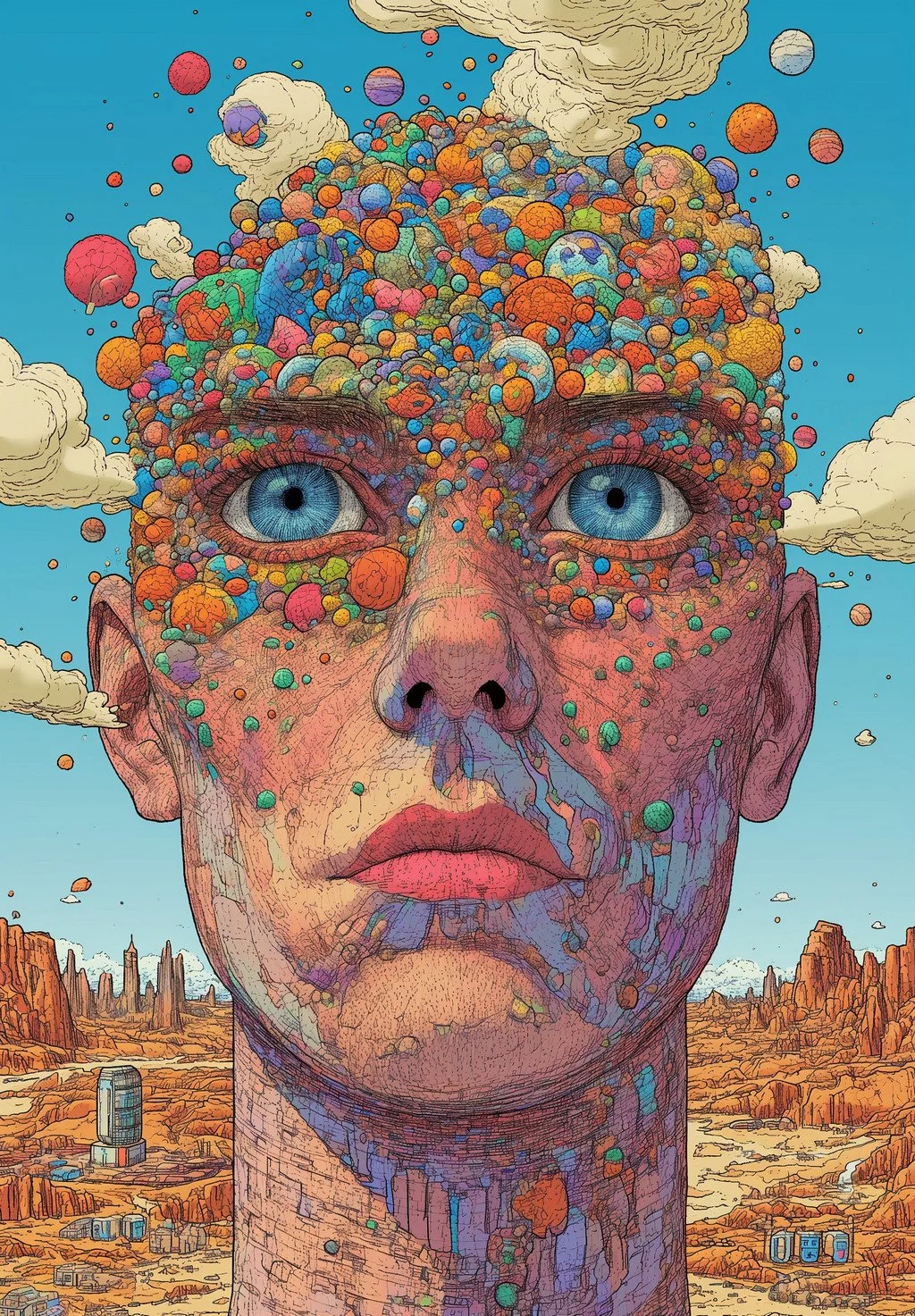The Naked Truth: A Journey Through the History of Nude Art
Greetings Warriors!
Today, we’re stripping things down—literally. We’re diving into the fascinating, controversial, and occasionally scandalous history of nude art. We’ll explore how it’s evolved from the idealized, godlike figures of ancient mythology to the raw, unapologetic depictions of real people. Our focus will be on two iconic works: Édouard Manet’s Olympia and Alexandre Cabanel’s The Birth of Venus. These paintings sparked debates, shook up the art world, and forever changed how we think about the human body in art.
Let’s start at the beginning, where the real drama begins with Manet. You might’ve heard of him—he’s kind of a big deal.
Édouard Manet - Olympia 1865
A Quick Look at Nude Art Before Manet
Before we dive into Olympia and the birth of controversy, let’s backtrack a bit. Nude art wasn’t always the shocking, boundary-pushing force it became in the 19th century. In fact, nudes had a pretty long and respected history.
In ancient Greece and Rome, nude sculptures were seen as the pinnacle of beauty and heroism. Gods, athletes, and mythical figures were idealized in marble, their bodies flawless and perfect. The idea wasn’t to show someone as they really were but to depict them as larger-than-life, embodying divine beauty and strength. Think of the famous statue of David by Michelangelo, carved during the Renaissance—his body is all about idealized perfection.
Fast-forward to the Renaissance, and nudes were still all the rage, though with a heavy dose of religion and mythology. Artists like Titian, Botticelli, and Raphael were painting goddesses, saints, and allegorical figures in the buff, but the nudity was often justified by mythological or biblical narratives. Take Botticelli’s The Birth of Venus, for example. Venus, the Roman goddess of love, emerges from the sea on a half-shell, her body an idealized symbol of beauty. Her nudity is pure, divine, and definitely not meant to resemble a real person.
But by the 19th century, things started to shift. Artists were tired of painting gods and heroes. They wanted to reflect the real world, the people they saw every day in Parisian streets, not just gods from ancient myths. And this is where things get interesting—enter Manet.
Édouard Manet : January 23, 1832 - April 30, 1883
Manet’s Olympia: A Revolution in the Nude
Now let’s get to the good stuff—Manet’s Olympia. First exhibited at the Paris Salon in 1865, this painting changed the game. Up until then, nude women in art were generally shown as ethereal, untouchable goddesses. Their bodies were idealized, their gazes soft and distant. But Olympia? She wasn’t having any of that.
Let’s set the scene. In Olympia, we see a nude woman lounging on a bed, looking straight at the viewer with an expression that’s cool, confident, and completely unbothered. This isn’t Venus. This is a modern woman, a Parisian courtesan, possibly modeled on Manet’s real-life muse, Victorine Meurent.
Victorine Meurent: February 18, 1844 – March 17, 1927
And here’s where things got controversial—Olympia was real. She wasn’t some mythical figure draped in allegory. She was a real woman, in a real bed, probably waiting for a real client. This was a massive departure from the accepted tradition of nudes in art. Manet wasn’t interested in painting an idealized, polished version of a woman. He wanted to show her as she was, unapologetic and in control of her own gaze.
Why Olympia Was So Controversial?
The Paris Salon was the most important art exhibition in France, and getting your work displayed there was crucial for an artist’s success. When Manet’s Olympia hit the Salon, the reaction was explosive. Critics hated it. They called it vulgar, shocking, even grotesque. But why did this painting, in a time when nudes were common, cause such an uproar?
It wasn’t the nudity itself that people found offensive—it was the context. In previous nudes, like Titian’s Venus of Urbino, the nudity was softened by the subject’s identity. Venus was a goddess, an otherworldly figure whose nakedness was symbolic and safe. But Olympia? She was a courtesan. She was a real person, and her gaze wasn’t passive or inviting. She stared directly at the viewer, almost confrontational, as if to say, “What are you looking at?”
Then there was the matter of her body. Manet didn’t idealize Olympia. She wasn’t flawless like the goddesses in Renaissance art. She was pale, almost flat in appearance, with no shadows or soft curves to make her more traditionally beautiful. It was as if Manet was stripping away the illusion of the perfect female body in art and showing a real woman with real features—and people weren’t ready for that.
Plus, Manet included a black maid in the background, holding flowers that were probably sent by a client. This was another shocking aspect of the painting, as it introduced race and class dynamics into the already taboo subject of a nude courtesan. The painting was not just about beauty but also about power, gaze, and the complex social realities of the time.
Suzanne Valadon - Nude on the Sofa1920.
Manet’s Realism: Using a Real Person as a Muse
One of the boldest moves Manet made was using a real, living person as his muse for Olympia. His model, Victorine Meurent, was a professional artist’s model who posed for many of his works. This was controversial for a few reasons.
First, it broke with the tradition of idealized nudes. In the past, even when artists used models, they were transformed into divine or mythical figures in the final painting. The body might have been based on a real person, but the face, pose, and context would be polished into something far removed from reality.
Manet didn’t do that. He painted Meurent as she was, without idealizing her features or creating a mythological backstory. This was seen as highly inappropriate at the time. A real woman, with all her imperfections, shown naked in a setting that wasn’t a fantasy world but a real bed in a real Parisian apartment? That was simply too much for the art establishment to handle.
And yet, this decision to use a real muse was groundbreaking. It opened the door for future artists to move away from the idealized, abstract nudes of the past and start painting real people with real bodies. Manet’s decision to paint Olympia as a modern woman marked a turning point in the history of art. It was a direct challenge to the conventions of the time and a bold statement about the artist’s role in representing the real world.
Eugene Jansson - Naval Bathhouse 1907
Cabanel’s The Birth of Venus: The Academy’s Answer
While Manet was busy shocking the art world, another artist was creating what would become one of the most celebrated nudes of the 19th century—Alexandre Cabanel’s The Birth of Venus (1863). In contrast to Olympia, Cabanel’s painting was everything the art establishment loved. It was classical, mythological, and technically perfect. And it was a massive hit.
The Birth of Venus depicts the Roman goddess of love emerging from the sea, reclining on a wave. Her body is idealized, her skin flawless, her pose graceful and serene. This was exactly the kind of nude that the Académie des Beaux-Arts adored: a figure that wasn’t just beautiful but perfect, untouched by the flaws of reality.
Alexandre Cabanel - The Birth of Venus1863
Napoleon III, the Emperor of France, was so taken with the painting that he bought it for his personal collection. And the public loved it too. Cabanel’s Venus wasn’t a real woman; she was a mythological ideal, a goddess whose beauty was meant to inspire awe, not scandal.
Alexandre Cabanel September 28 ,1823 – January 23, 1889
Why Cabanel’s Venus Was Celebrated While Olympia Was Scorned
So why did Cabanel’s The Birth of Venus get all the praise while Manet’s Olympia was vilified? The answer lies in the approach to the nude subject.
Cabanel’s Venus was everything the public and critics expected from a nude painting. She was mythological, meaning her nudity wasn’t controversial—it was justified by her divine status. Her body was the picture of perfection, an ideal that aligned with centuries of artistic tradition. There was no suggestion of real-world sexuality or modern life in the painting. Venus was a symbol, not a person.
In contrast, Olympia felt too real. She wasn’t a symbol of beauty or love. She was a woman, probably a prostitute, staring the viewer down. There was no escape into mythology or fantasy with Olympia. Instead, Manet forced the viewer to confront the realities of the modern world, with all its imperfections, taboos, and complexities.
Amedeo Modigliani’s - Nu couché 1917
The Impact of Manet and Cabanel on Future Artists
Manet’s Olympia may have been scorned at the time, but it didn’t take long for other artists to pick up on what he was doing. The boldness of painting real people as nudes, without the safety net of myth or perfection, resonated with a new generation of artists who wanted to push the boundaries of art even further.
The Impressionists, in particular, were inspired by Manet’s approach to realism. Artists like Edgar Degas, Pierre-Auguste Renoir, and even Claude Monet began to experiment with depicting real people, real bodies, and real lives. They moved away from the academic ideals of beauty and started exploring the raw, fleeting moments of modern life.
Waterlilies and Japanese Bridge by Claude Monet, 1899
Degas, for example, often painted women in intimate, everyday moments—bathing, dressing, or simply relaxing. His nudes weren’t mythological or idealized; they were women caught in unguarded moments, their bodies real and human, not polished or perfected for the viewer’s gaze.
Meanwhile, Renoir’s nudes, while more idealized than Manet’s, still reflected a shift toward capturing the sensuality and warmth of real human flesh, rather than the cold perfection of classical figures.
Cabanel, too, left a legacy, but it was a different kind of legacy. His Venus became the gold standard for academic art, and for a time, his style continued to dominate the official Salons. However, as modernism gained traction, Cabanel’s influence began to wane. His idealized nudes came to be seen as old-fashioned, relics of a time when art was more about perfection than reality.
Pierre-Auguste Renoir - Bather With Blonde Hair 1903
Conclusion: The Legacy of Nude Art
In the end, Manet’s Olympia and Cabanel’s The Birth of Venus represent two very different approaches to the nude in art. One was a bold, controversial move toward realism and modernity, while the other clung to the classical ideals that had dominated art for centuries. Both paintings have left a lasting legacy, shaping the way we think about the human body in art.
Manet’s decision to use a real person as his muse for Olympia was revolutionary. It opened the door for artists to break away from the mythological and idealized nudes of the past and start painting real people with real bodies. It challenged the viewer’s expectations and forced them to confront the complexities of the modern world.
Cabanel’s The Birth of Venus, on the other hand, was a final nod to the classical tradition, a beautiful and technically perfect representation of divine beauty. It was celebrated in its time, but as art moved forward, it became clear that the future belonged to artists like Manet, who weren’t afraid to push boundaries and challenge the status quo.
And that, Warriors, is the naked truth about the history of nude art.



















